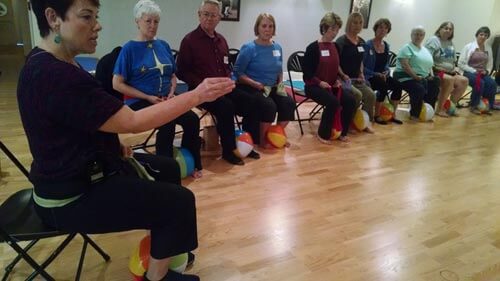Integral Human Gait™ theory
 The inability to walk well and independently is a game-changer in a person’s quality of life. Clinical research has identified clear links between human gait characteristics and different medical issues: Parkinson’s disease, osteoarthritis, back pain, hip, and lower leg issues, and early fall detection. The science is clear: a person who cannot (or will not) walk struggles with more health issues than a person who can (and does) walk. A healthy gait feeds our joints and bones and assists our circulatory, lymphatic, and respiratory systems in eliminating waste. Recent studies also support the impact of gait on creativity, cognition, and depression. Regardless of a medical diagnosis, at the heart of the human experience, the “how” of walking shapes physical comfort, security, emotional well-being, and happiness.
The inability to walk well and independently is a game-changer in a person’s quality of life. Clinical research has identified clear links between human gait characteristics and different medical issues: Parkinson’s disease, osteoarthritis, back pain, hip, and lower leg issues, and early fall detection. The science is clear: a person who cannot (or will not) walk struggles with more health issues than a person who can (and does) walk. A healthy gait feeds our joints and bones and assists our circulatory, lymphatic, and respiratory systems in eliminating waste. Recent studies also support the impact of gait on creativity, cognition, and depression. Regardless of a medical diagnosis, at the heart of the human experience, the “how” of walking shapes physical comfort, security, emotional well-being, and happiness.
A new theory on walking? Really? What is there that isn’t already known?
Gait is likely more than you think it is. Beyond the physical/biomechanical attributes, gait influences and informs other aspects of our well-being: emotional, mental, spiritual, and evolutionary. It holds the keys to lifelong quality movement. Not only is the expression of our unique being in the world most clearly observed through our gait, but the unconscious impact and carryover of our gait can influence improvement in other areas of mobility (climbing, changing and maintaining body positions, carrying and handling objects).
Often we believe gait needs to be taken apart, reexamined, and explored beyond locomotion for the advancement of human growth and connection. Thought to be well understood by the person on the street and the rehab professional, we believe gait needs to be broken open, reexamined, and explored for the good of all.
What if a new perspective on gait offers solutions for chronic pain syndromes like tendonitis and bursitis of the extremities, muscle and tendon tears, fibromyalgia, back and neck pain, failed surgeries, and depression?
In the development of Integral Human Gait™ theory (IHG), we look to other fields of study to create a more cohesive and comprehensive picture of gait. In addition to the somatic field of education, we study contributions from osteopathy, physical therapy, anthropology, human potential, biomechanics, exercise science, human kinetics, and neuroscience. Because the way we walk impacts our well-being, human evolution, and global development.
A Physical Therapist discusses the importance of the Integral Human Gait™ theory for his patients.
Integral Human Gait™ Theory has “two legs.” One is a comprehensive, cognitive gait map. Understanding how humans develop and the functional movement patterns that make up gait is just as important as knowing the individual kinematic parts. The other is the navigational means needed to use this map. Somatic learning modalities like the Feldenkrais Method® and Bones For Life® ready the brain for new learning and cultivate an awareness of the parts in relationship to the whole. Integral Human Gait™ theory is the vehicle that puts it all together, combining the map and the means with the parts and the whole. It provides direct access to the living, dynamic map inside each of us that guides all human functions.
Through our academic studies and practical experiences, we understand that the growth process is never complete, and we understand that we possess an infinite learning capacity. We can learn to move, walk, and stand differently because we can re-wire the very nature of our brains. “We just have to remember that “there is nothing permanent or compulsive in [our] system, except what [we] believe to be so.” –Moshe Feldenkrais
Gates within Gait – Intelligent Patterns
Not only is gait a gateway to human health, but there are also gates within gait that can guide us as rehabilitation and wellness professionals. Here is a list of our current working theory categories and a couple of examples of the specific gates explored within each category.
Science Gate:
– Neuroplasticity
– Anatomy
– Evolution
Somatic Education Gate:
– Kinesthesia
– Timing
– Coordination
– Awareness
Human Potential Gate:
– Anthropology
– Creativity and discovery
– Communication
– Service
Human Development Gate:
– Developmental Sequence: Positions and patterns of movement
– Reflexes: Primitive, postural, protective, equilibrium
Kinematic Gate:
– Upright alignment and rotation activated through the Vertical Power Line of the Heel.
– Simultaneous multi-planar movements (teeter/totter) vs. the illusion of single plane movement
– Shoulder Girdle: Does it follow the upper or lower ribs during walking or reaching?
– Levels and location of counter-rotation
– How can the pelvic rotate and translate when the Lumbar Spine is limited in its ability to rotate?
